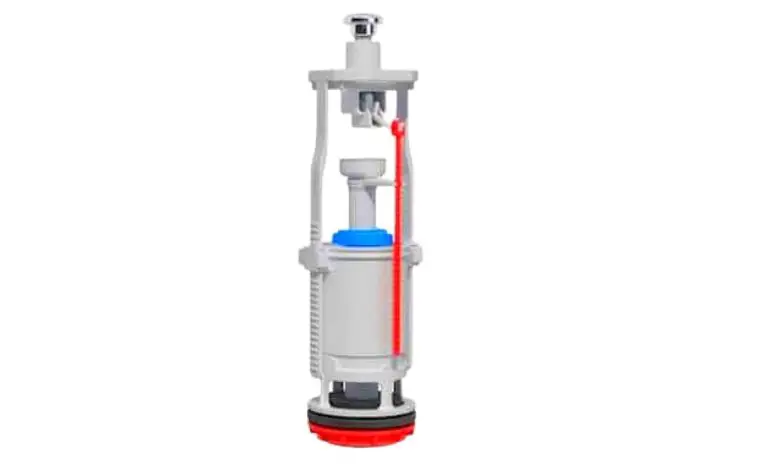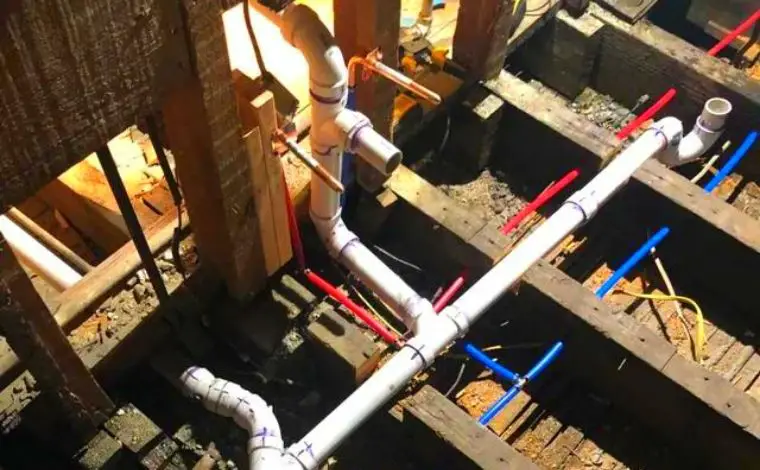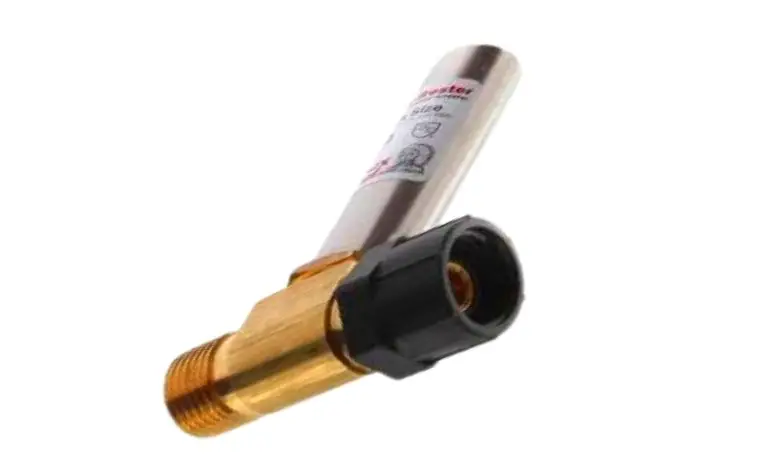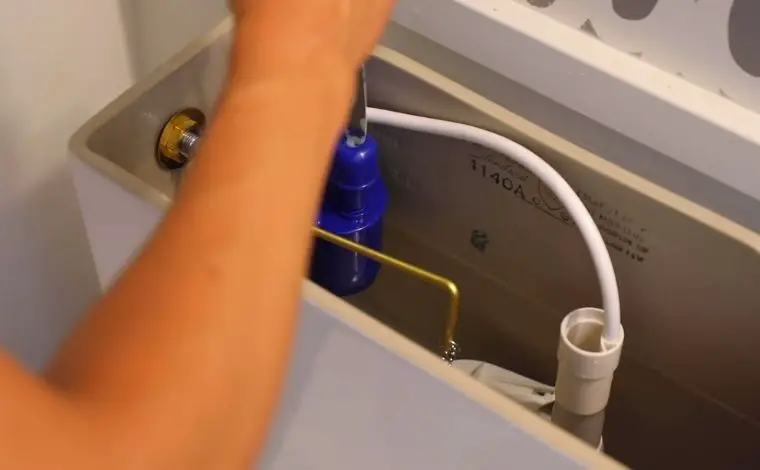Have you ever sat on your toilet and heard a loud, ghostly sound that made you jump? No one wants that! A noisy toilet can break your concentration, disturb your sleep, and even scare your child when it suddenly roars in the middle of the night. Beyond being annoying, it’s also a sign that something inside your toilet system isn’t working quite right.
Luckily, there are several practical ways to make your toilet flush quieter and restore peace to your home. In this article, we’ll explore what causes loud toilet noises, and step-by-step methods to fix them easily — with or without a plumber.
Why Does My Toilet Make So Much Noise?
A toilet might seem like a simple device, but several small components work together to make each flush smooth and quiet. When one of these parts malfunctions, it can create strange or loud sounds. Let’s take a closer look at the most common causes.
1. Interrupted Water Flow
A continuous and smooth water flow is essential for your toilet to refill quietly. When the fill valve — also known as the ballcock — becomes faulty or partially blocked, water enters the tank unevenly. This can lead to sputtering, hissing, or screeching noises.
A faulty fill valve not only produces annoying sounds but also prevents the tank from filling properly. If the water flow is interrupted, air bubbles may form in the pipes, which vibrate and amplify the noise inside your bathroom.
2. Hard or Clogged Seals
Your toilet uses several rubber or silicone seals to prevent leaks and regulate water flow. Over time, these seals harden or collect mineral deposits and debris. When that happens, water pressure builds up and collides with the blockage, creating a high-pitched screech or whistling noise.
A stiff or dirty seal can also cause vibrations and uneven flushing pressure, further contributing to loud flushing sounds.
3. Faulty Flushing Mechanism
Every toilet has a flushing mechanism that includes the handle, chain, flapper, fill valve, and flush valve. These parts are interconnected — if one of them malfunctions, the entire system can go out of balance. A weak or stuck flapper, for example, may not close properly, causing water to flow continuously and make a gurgling noise.
Sometimes, even a small misalignment of the chain or lever can produce clanking or rattling sounds when you flush. Over time, this constant noise can become irritating.
4. Water Hammer
If your toilet makes a loud “bang” or “thud” after flushing, it’s likely experiencing a water hammer — one of the most common (and startling) plumbing problems. It occurs when flowing water suddenly stops due to a quick-closing valve. The trapped pressure has nowhere to go and violently shakes the pipes, creating a hammer-like noise.
Besides being noisy, a water hammer can cause serious long-term damage to your pipes, fittings, or even your toilet tank if not fixed promptly.
5. Loose Pipes and Fittings
A toilet is connected to your home’s plumbing through a network of pipes. If any of these pipes become loose over time, the vibrations from water flow can cause rattling or banging sounds. Each time you flush, the pipe shakes slightly against the wall or the floor, amplifying the noise.
This is especially common in older homes or bathrooms that have undergone recent renovations where the plumbing wasn’t properly secured.
6. Thin or Echo-Prone Bathroom Walls
Sometimes, the noise isn’t entirely your toilet’s fault. In small bathrooms with tile walls or hollow drywall, sound travels more easily. Even a normal flush can seem much louder due to the echo effect. In such cases, adding insulation or soundproofing materials can dramatically reduce noise levels.
6 Effective Ways to Quiet a Noisy Toilet Flush
A noisy toilet may not always require a professional plumber. You can fix most of these issues with a few simple adjustments, basic tools, and some patience. Below are six proven methods to make your toilet flush quieter and more peaceful again.
1. Install a Quiet Fill Flush Valve
If your toilet makes a roaring or hissing sound while refilling, the culprit is likely your fill valve. The easiest fix is to replace it with a quiet fill flush valve. These valves regulate water flow more efficiently and fill the tank silently by directing water back near the waterline.
How to do it:
-
Turn off the water supply and flush the toilet to empty the tank.
-
Remove the old fill valve and install a new quiet fill valve of the same height.
-
Reconnect the water supply and test the flush.
Quiet fill valves are inexpensive, easy to install, and available at most hardware stores. You don’t need to replace your entire toilet — just swap out the valve, and you’ll instantly notice the difference.
2. Adjust the Water Inflow Rate
If the toilet fills too quickly, it can create turbulence and unpleasant gurgling sounds. By reducing the water inflow rate, you can achieve a much quieter flush.
To do this, slightly tighten the inlet valve screw (usually located near the base of the tank). This slows the flow of water entering the cistern. However, note that a slower inflow will also take a bit longer to refill the tank — so it’s a trade-off between speed and quietness.
3. Secure or Strengthen the Pipes
Loose pipes are a hidden cause of many “mystery” toilet noises. Take a screwdriver or wrench and check all visible joints and fittings around the toilet. Tighten any loose connections gently — don’t overtighten, as that can damage seals.
If your pipes run inside the wall, you may notice a rumbling or thudding sound after flushing. In that case, a plumber can add pipe brackets or foam padding to secure the pipes and absorb vibrations.
4. Eliminate Water Hammer
A water hammer arrestor is the best solution for this issue. It’s a small device that absorbs the shock when water flow stops suddenly, preventing the loud banging noise.
You can attach it to the water supply line behind the toilet or near the main water shut-off valve. This simple device prevents future damage to your pipes while keeping your toilet whisper-quiet.
Bonus Tip:
If you can’t install a water hammer arrestor right away, partially close the main shut-off valve to reduce water pressure. This will temporarily minimize the hammering sound.
5. Add Soundproofing Materials
If your toilet lid or seat slams shut loudly, or if the tank vibrates against the wall, adding soundproofing materials can make a huge difference.
Here’s what you can do:
-
Use toilet seat bumpers or soft-close lids – they gently close without a bang.
-
Add foam or rubber padding between the tank and the wall – it absorbs vibration.
-
Use sound-absorbing mats or covers made from sponge or leather – these reduce echo and make your bathroom acoustics softer.
Alternatively, you can invest in a soft-close or slow-close toilet that automatically shuts quietly after each use. This upgrade not only eliminates slamming sounds but also gives your bathroom a modern, elegant feel.
6. Replace the Entire Toilet System
If you’ve already replaced the fill valve, adjusted the pipes, added soundproofing, and still can’t stop the noise — it might be time for a full upgrade.
Modern toilets come with built-in noise-reduction technology and efficient water flow systems that minimize flushing sound while maximizing performance. Consider buying a pressure-assisted or gravity-fed toilet with a quiet flush design.
Look for models labeled “quiet flush” or “low-noise operation.” These are designed with advanced mechanisms that ensure smooth water delivery and minimize vibrations inside the tank.
Although replacing the toilet system is more expensive than simple repairs, it’s a long-term solution that ensures lasting peace and better efficiency.
Additional Tips to Reduce Toilet Noise
If you want to go the extra mile, here are some additional techniques that can further quiet your toilet flush:
-
Check for air pockets: Trapped air in the water lines can increase gurgling noises. Bleed the lines by turning off the main water and reopening it slowly.
-
Use a tank liner kit: A foam tank liner can insulate the tank and reduce the echo from flushing.
-
Maintain regular cleaning: Mineral buildup can block small water passages and cause turbulence. Clean your fill valve and flapper regularly with vinegar to remove calcium deposits.
-
Adjust the float height: If the water level in the tank is set too high, it causes splashing noise during refill. Adjust the float so the water stops just below the overflow tube.
-
Install an anti-vibration mat: Place it beneath the toilet base to absorb vibrations and prevent noise from transferring to the floor.
When to Call a Professional Plumber
Sometimes, the source of the noise might be hidden deep within the plumbing system — beyond what a DIY fix can handle. You should contact a plumber if:
-
The noise continues even after replacing the fill valve.
-
You hear loud banging (possible water hammer) after every flush.
-
You notice leaks around the base of the toilet or behind the wall.
-
You suspect your house’s water pressure is too high.
A certified plumber can inspect the entire system, identify the root cause, and ensure all fittings are properly aligned and pressure-balanced. Professional help saves you time and prevents costly damage in the long run.
Preventing Future Toilet Noise
Once you’ve fixed your noisy toilet, maintaining it regularly will prevent the problem from returning. Follow these maintenance habits:
-
Clean the tank every 3–6 months to remove sediment and mineral buildup.
-
Inspect the fill valve and flapper for wear or cracks and replace them early.
-
Tighten bolts and fittings gently once every few months.
-
Monitor your water pressure: Keep it between 40–60 psi to prevent stress on pipes.
-
Flush properly: Avoid overloading the toilet with tissue or debris that can strain the system.
These small practices can ensure your toilet stays quiet, efficient, and long-lasting.
Wrapping Up
A noisy toilet might seem like a small nuisance, but over time it can affect your comfort, your sleep, and even your plumbing health. The good news is that most noise issues come from minor problems — faulty valves, loose fittings, or simple pressure imbalances — all of which can be fixed easily.
Start by identifying the source of the noise. Then, follow the steps above: replace the fill valve, adjust water flow, secure pipes, or add soundproof materials. If the noise persists despite your efforts, it’s best to upgrade to a modern, quiet flush toilet or call in a professional plumber for expert assistance.
Your bathroom should be a peaceful retreat — not a concert hall of flushing sounds. By taking these steps, you can enjoy the soothing silence of a perfectly functioning toilet once again.
Hi, this is Robert Crossan, the owner of this website, has 17 years of experience in the installation, maintenance, and repair of toilets and plumbing systems. After completing the Level 2 Basic Plumbing course in 2005, I started working in both domestic and commercial buildings as a professional plumber. So I can figure out the core difference between different toilet models and brands. It also helped me monitor their work performance and setbacks.